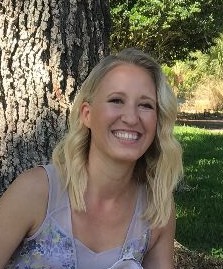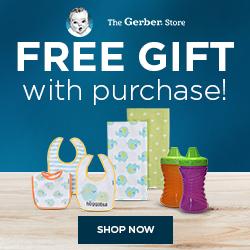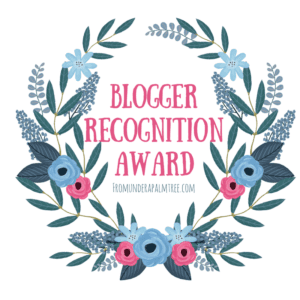
Depending on how familiar you are with cloth diapering, you might be thinking, “What exactly is a prefold diaper?” Simply put, it’s a 3 panel, rectangular piece of fabric that contains multiple layers of either cotton, bamboo, hemp, or flannel— traditionally with an extra layer in the middle for extra absorbency. They’re folded and fastened to baby inside of a waterproof diaper cover.
Before I even got pregnant with my son I knew I wanted to use cloth diapers. My mom used them with me and my sisters, and because there are significant age gaps between us, I still remember diaper laundry, safety pins, and plastic pants all around the house. Let me assure you that this sometimes referred to as “old fashion” way of diapering has come along way in recent years.
Not only are prefolds considerably better for the environment but they can help save you tons in diaper costs. Obviously, they’re reusable which is a key factor in helping to reduce your environmental footprint. The natural fibers they’re made of are safer and more gentle on your baby’s delicate skin.

If you’re interested in cloth diapering, here are some of the basics questions you might be asking yourself. These are definitely the questions I was asking myself and only through my experiences am I able to answer them.
Related: 10 Reasons to Choose Cloth Diapers
Here are the basics you need to know about How to Use a Prefold Diaper on Your Baby:
How much money can I really save using prefold diapers?
Prefold diapers are the most budget-friendly and cheapest way to cloth diaper. On average, 1 dozen Indian prefold diapers costs between $21.99- $33.99 on Amazon and diaper covers cost about $10-$13 each. You can essentially cloth diaper an infant full time for under $150, not including miscellaneous cloth diapering accessories. To give you a comparison, Target sells a box of newborn diapers (132 ct.) for $28.99 + tax. On average, you’ll spend about $100 month on diapers and wipes for at least the first 1 year of your child’s life. That’s $1,200 a year on disposable diapers and wipes. Yikes!

What kind of prefold diaper should I buy?
The most common types of prefold diapers are Chinese, Indian, organic cotton—bleached and unbleached, fleece, and bamboo. All have different absorbency qualities but ultimately do the same job. My “go-to” was 100% organic cotton, unbleached—very absorbent and few leaks.

How many prefolds do I need?
If you plan to cloth diaper your baby directly after birth, plan to have at least 2-3 dozen appropriately sized prefolds. Infants may need up to 10-12 diaper changes a day so with 2-3 dozen prefolds on hand you can expect to do diaper laundry every 2-3 days. As your baby gets older, you’ll need fewer prefolds. When my son turned one, I only needed 2 dozen prefolds and did diaper laundry the same amount.
Related: Diaper Changing Table Essentials

What size prefolds do I need?
Babies come in all different shapes and sizes and thankfully so do prefolds. For this reason, you will have to purchase larger sizes as your baby grows in order to prevent unwanted leaks. For this reason, don’t go crazy buying too many of one size. Something else you’ll see on size charts is the diaper ply. For example, 4X6X4 means that the prefold has 4 layers of material on the outer folds and 6 layers in the center fold—there’s more absorbency where you need it! One of my favorite sites to buy prefolds is Green Mountain Diapers. They have amazing quality diapers and a great sizing chart. They’ve even got prefolds for preemies, which is what I used when my son was born at 7 pounds, 1 ounce. OsoCozy prefolds were another favorite of mine.

How do I fasten a prefold diaper?
In most cases, a prefold diaper needs some way to be secured inside the cover so it doesn’t move around and cause leaks, especially for newborns and infants. Your grandparents, and even my mom used to use a safety pin on each side. Ooch! Forget the pricks and use a Snappi. Although they’re still a bit sharp and can be dangerous if your baby gets a hold of it, they’re much easier to secure a prefold than safety pins. Buy a few in case they get lost. Tip: always keep one in your diaper bag.

Can a prefold be worn solo?
No, in most cases you’re going to need to pair a prefold with a waterproof diaper cover. I’ve read that other mom bloggers will let their baby roam the house with just a prefold—no cover! I found that it’s not practical unless you don’t mind cleaning pee off your carpet and furniture. Once the prefold is peed in, it will saturate through and get anything your baby is sitting on wet. No thanks! Prefolds and waterproof covers go hand-in-hand.
Covers also come in different sizes and will have to be replaced as baby grows. They may last longer because they are equipped with snaps and/or hook and loop (Velcro) to reshape and resize according to baby’s weight. Covers come in 3 common sizes: newborn, size 1, and size 2. Thirsties Duo Wrap were my “go-to” diaper cover, such cute designs and great quality. Bonus: you can get Amazon Prime delivery.

Thirsties Duo Wrap
How many diaper covers do I need?
Waterproof diaper covers can be wiped and reused after each diaper change unless they become soiled (pooped on). For an infant, plan on 6-9 covers if you only want to wash them every 2-3 days. For an older child, 3-5 covers would be sufficient for the same washing schedule. Remember to alternate covers throughout the day if you’re reusing 3 covers per day. Otherwise, they will become saturated with pee and start to smell.

How do I fold a prefold diaper (on baby)?
The magical answer is different for every parent and every baby. There are a few common and easy to use folds that minimize leaks. The best one for you is the one you can remember, do quickly, and has the fewest leaks. Watch as many YouTube videos as possible, practice, and don’t give up. Also, check out this Green Mountain Diapers page for some visuals on different types of folds.
Related: Nursery Dresser Organization
Here are 5 common diaper folds:
1. Jelly Roll Fold (great at holding in newborn runny poops)
2. Trifold (recommended for older babies)
3. Angel Fold
4. Newspaper Fold
5. Bikini Fold

How do I prep a prefold diaper?
Prefold diapers need to be washed and dried between 6-10 times before they reach maximum absorbency level. Daunting, I know! When you buy new prefolds, they come very flat and nearly non-absorbent. It will take multiple hot washes for prefolds to reach a decent absorbency level. Tip: test your diapers by pouring a cup of warm water over the center fold when it’s dry. If the water seeps in quickly, then it’s ready. If the water collects on top of the prefold, then it’s not quite ready. Keep washing and drying! Note: prefolds will become fluffier with each drying cycle.
Where do I store dirty diapers and covers?
Wet pails are a thing of the past just like safety pins! My mom used to use a pail of bleach water and toss the dirty diapers in until laundry day. Wet pails are no longer necessary, in addition, they actually lead to bacteria growth as the diapers sit for days in the water.
Dirty diapers should be stored in a dry pail with a lid and lined with a waterproof bag. They can also be stored in a wet bag which is similar to a waterproof pail liner but it has a zipper and handles. I used a dry pail (garbage can with step foot pedal) in the laundry room and a wet bag hanging on the dresser knobs near my changing station. This method allows you to easily and quickly drop the dirty diaper directly following a diaper change. You can then empty the wet bag into your main dry pail at the end of each day to prevent odor buildup. Tip: avoid odor buildup in your dry pail by using an air freshening disc or ball inside the pail.

I liked to store my dirty diaper covers in a separate small wet bag that hung on the back of my laundry room door. Although it isn’t necessary, I found that keeping them separate (just until laundry day) extended their life.

Where does the poop go?
Exclusively Breastfed (EBF) baby’s poop is water soluble and easy to clean. As long as your baby has typical EBF poop (green, yellow, brown-ish and generally unscented) then it can go right in the wet bag or dry pail until laundry day. No need to discard EBF poop in the toilet before washing either, it will come out clean in your normal wash. EBF poop does not “typically” stain but if you want to rinse off the poop prior to tossing it the wet bag or dry pail, then invest in a diaper sprayer (more on sprayers in an upcoming post about must have cloth diaper accessories). Formula fed baby poop should be tossed in the toilet before dropping in the dry pail.
How do I travel with prefolds?
Bring just as many extra prefold diapers with you when you’re out of the house as you would disposable diapers. The rule is 1 for every hour you’ll be out + 1 extra. Also, bring along 1 extra diaper cover in case the other is soiled and a wet bag for soiled diapers. I always carried an extra Snappi! When you get home, toss dirty diapers in the dry pail.
If you’re new to cloth diapering, chances are you’re reading this post. Maybe you haven’t fully committed. Maybe you’re just dipping your foot in, testing the waters. Asking yourself, is this something I really want. Can I really commit myself to cloth diapering AND get my husband to commit?
Related: Diaper Bag Essentials
The answer is YES!
If you’re even considering cloth diapering it’s probably because you already know the dangerous and harmful chemicals used in disposable diapers. Not to mention the waste it produces in our landfills. There’s an entire online community of cloth diapering moms and so much information at your fingertips.
Check back later for tips on the best soap and washing routine for your cloth diapers.
More to come on why I love pocket diapers, night diapering tips, the best cloth diaper inserts, must have cloth diapering accessories, cloth diaper no-no’s, potty training, and more.
Related: Tips to Help Moms Stay Happy and Healthy

Have you ever considered cloth diapers? I’d love to hear thoughts and opinions. Share in the comments below.
This post contains affiliate links and advertisements. Affiliate links and affiliate ads help support From Under A Palm Tree and help pay for web hosting, email delivery, domain registration, and other various fees that help keep From Under A Palm Tree operational. We appreciate your support!
Cloth diaper items talked about in this post:

Hi! I’m Meagan and I’m a 41 year old mom of a high energy almost 9 year old, happily navigating my way through the little boy years. I’ve been married for 14 years. I met my husband over 20 years ago in high school; we got married 10 years later after graduating from the University of South Florida. I currently help run a family business with my parents while blogging about my life and love of DIY projects!
When I’m not at a kids sports game, I enjoy spending time with my family on a beach anywhere. I also love decorating and organizing, fun DIY projects, bargain shopping, and eating out or in! I also love Barbecue anything and a good show or movie on Netflix.




sometimes you take for granted how to do this but it is important to learn especially if you have a baby on diapers thanks for the tips
This was a terrific breakdown! I’ve been curious about prefold diapers and definitely feel more confident in trying it out myself!
We don’t have kids yet, but I have really been leaning towards reusable diapers from the things my friends who use them say! And I love that it’s something that won’t end up piled in a landfill!
Thanks for putting together such a detailed post! We are currently expecting baby #2 in July and as our first is already out of diapers I’m dreading the cost of all those disposables again! This has soo much great information and had really given me the kick in the butt to really consider using pre-folds for this baby!
I wish they had these around when my kiddos were little! I really like the idea of not having to use disposable diapers, since they’re so bad for the environment.
super interesting read, i had no clue it takes so long for ONE diaper to decompose!